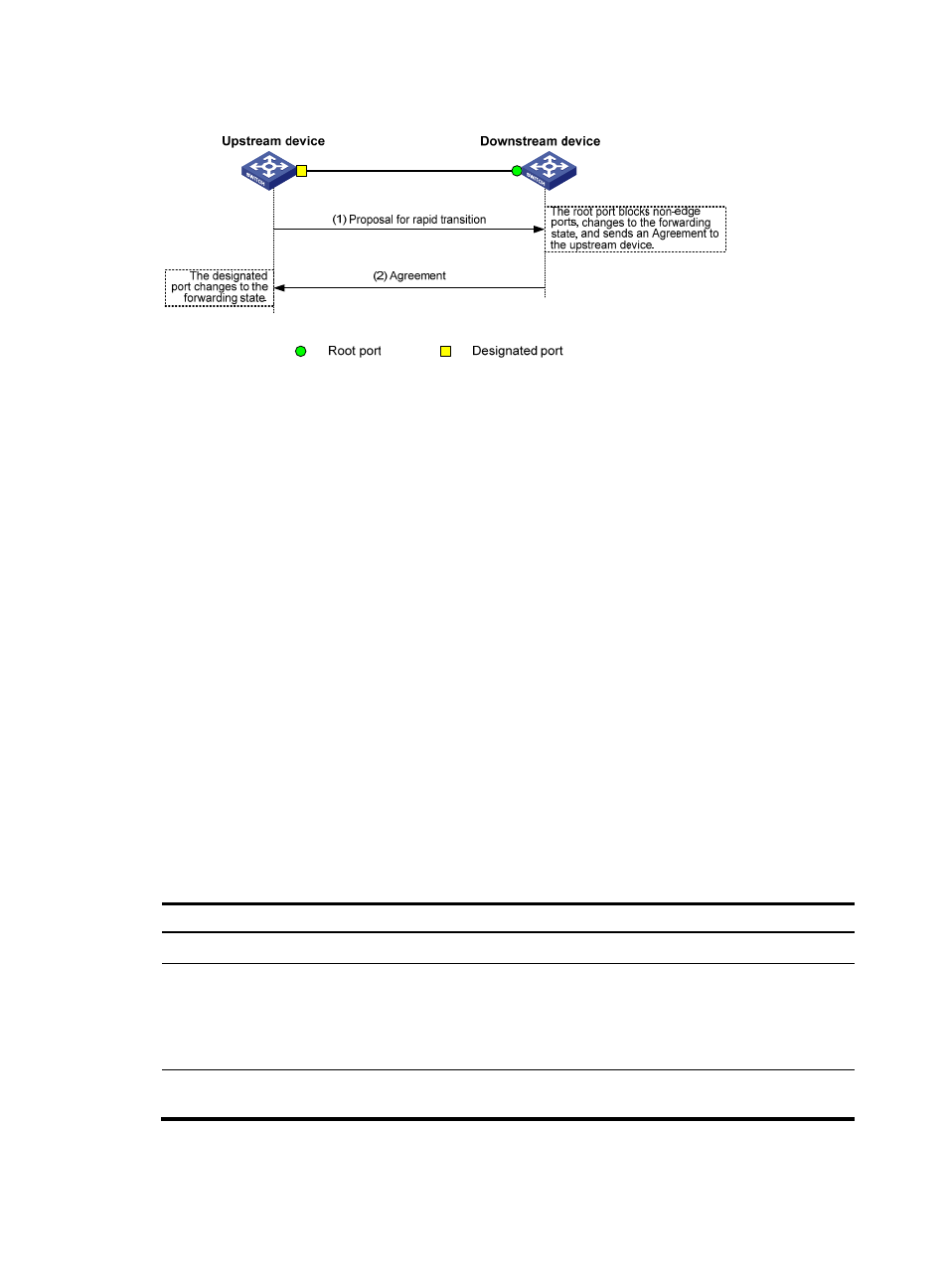Configuration prerequisites, Configuration procedure – H3C Technologies H3C WX5500E Series Access Controllers User Manual
Page 100

89
Figure 22 Rapid state transition of an RSTP designated port
If the upstream device is a third-party device, the rapid state transition implementation might be limited.
For example, when the upstream device uses a rapid transition mechanism similar to that of RSTP, and the
downstream device adopts MSTP and does not operate in RSTP mode, the root port on the downstream
device receives no agreement packet from the upstream device and sends no agreement packets to the
upstream device. As a result, the designated port of the upstream device fails to transit rapidly, and can
only change to the forwarding state after a period that is twice the forward delay.
You can enable the no agreement check feature on the downstream device's port to enable the
designated port of the upstream device to transit its state rapidly.
Configuration prerequisites
Before you configure the no agreement check function, complete the following tasks:
•
Connect a device to a third-party upstream device that supports spanning tree protocols with a
point-to-point link.
•
Configure the same region name, revision level and VLAN-to-instance mappings on the two devices,
assigning them to the same region.
Configuration procedure
To make the no agreement check feature take effect, enable it on the root port.
To configure no agreement check:
Step Command
Remarks
1.
Enter system view.
system-view
N/A
2.
Enter interface or port
group view.
•
Enter Layer 2 Ethernet interface view or
Layer 2 aggregate interface view:
interface interface-type interface-number
•
Enter port group view:
port-group manual port-group-name
Use one of the commands.
3.
Enable no agreement
check.
stp no-agreement-check
By default, no agreement
check is disabled.